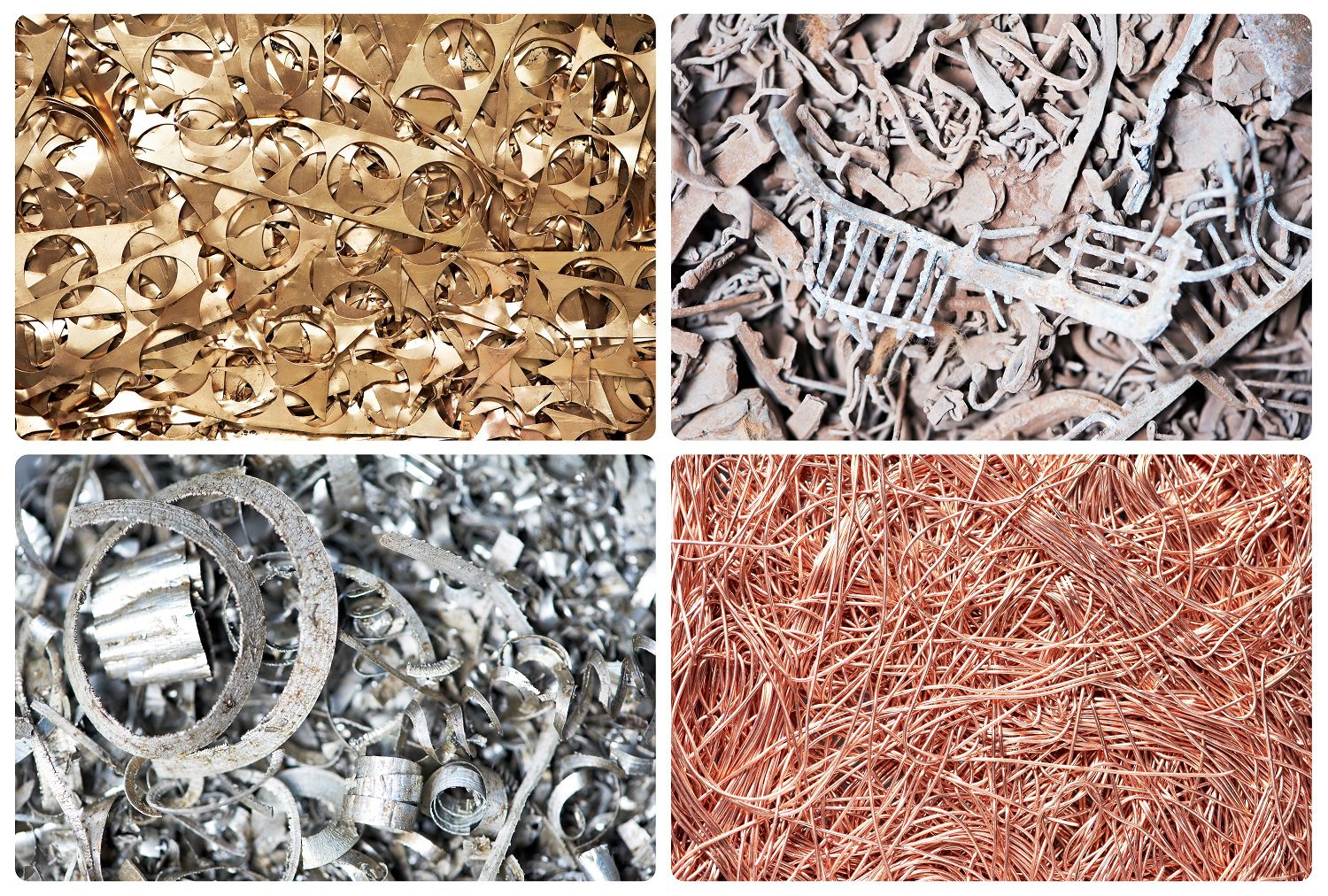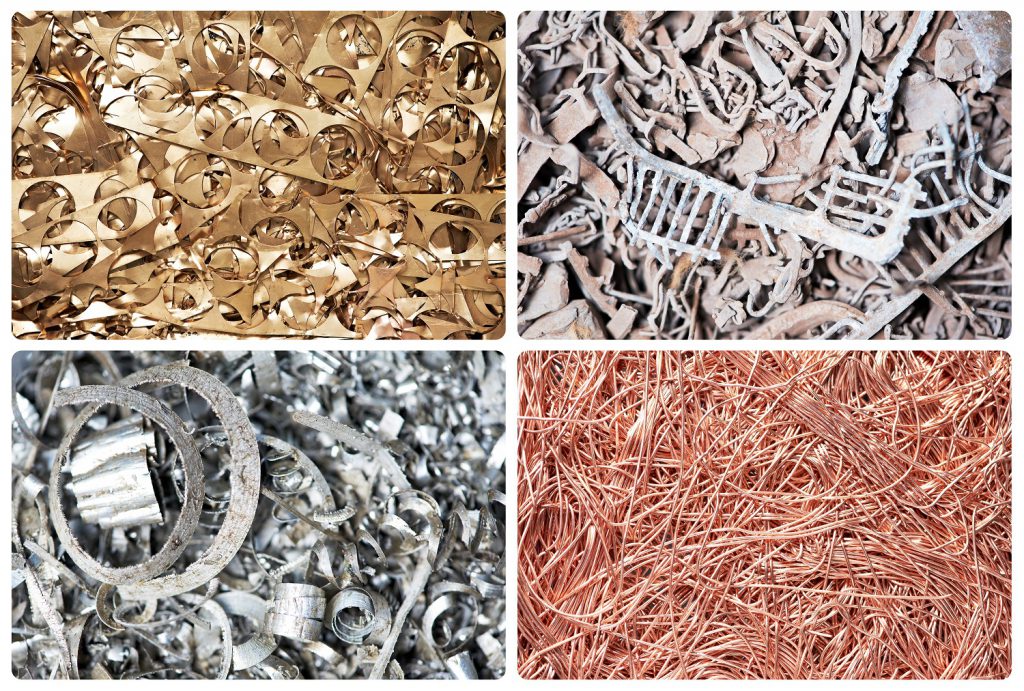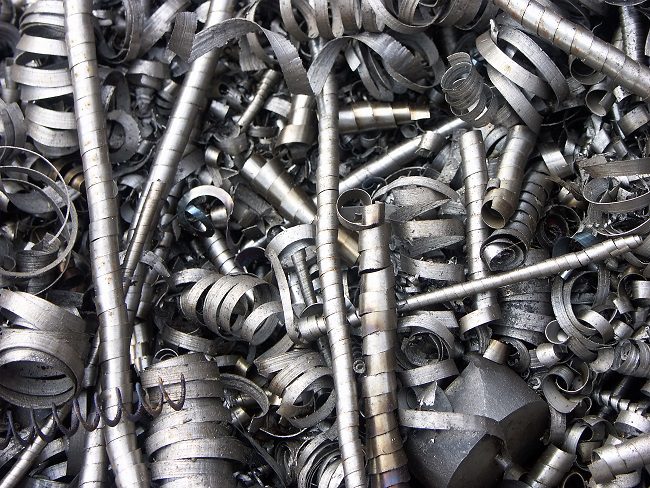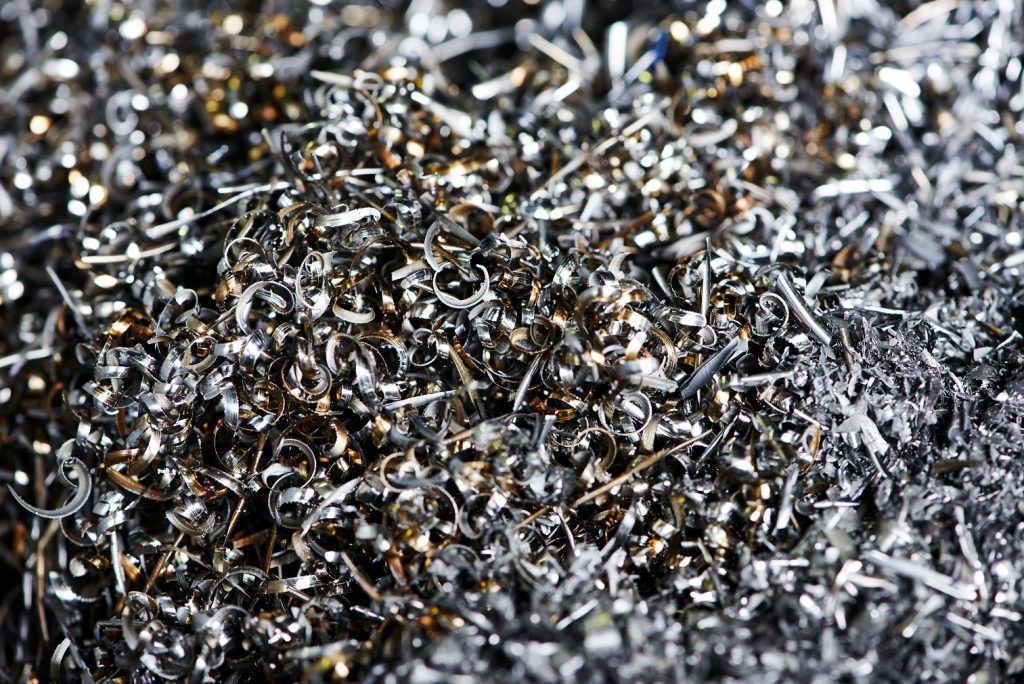
Scrap Metal Determination and Disposal

Written by: Brittiny Harris, NES, Inc.
 Is it scrap metal? Is it a hazardous waste? Is it both? This article explores the federal and California state regulations guiding the proper management of these materials.
Is it scrap metal? Is it a hazardous waste? Is it both? This article explores the federal and California state regulations guiding the proper management of these materials.
Defining Scrap Metal
Discerning whether a material is considered to be scrap metal under federal and/or state regulations can be difficult. Further, once such a determination is made, it can then be confusing deciphering how the material must be properly managed.
Scrap metal is defined in section 261.1 (c)(6) of Title 40 of the Code of Federal Regulations (40 CFR) as smaller bits and pieces of larger metal parts or metal pieces that are attached to soldering or bolts and can be recycled according to 40 CFR §261.2(c)(6). Scrap metal can include wire, rods, bars, sheets, radiators, cars etc. In the Zendesk article What is a Scrap Metal and What is its Regulatory Status When Reclaimed?, the author describes scrap metal as “a product made of metal that has become worn out or is off-specification and is recycled to recover its metal content, or metal pieces generated from machining operations and recycled to recover their metal content.” However, the way federal law defines scrap metal typically differs from state law definitions.
Federal vs. State Definitions
An article released by the California Department of Toxic Substances Control (DTSC) entitled Scrap Metal Recycling addresses the disparity between the federal and California state definitions of scrap metal. Under federal law scrap metal is the byproduct of metal that has become worn out and is always a solid waste when it is discarded; however, it is excused from regulation as a hazardous waste when recycled. Scrap metal is to be recycled in order to recover its metal content or metal pieces that are generated from machining operations. Not all wastes that contain metal are considered scrap metal.
Under state regulations, the hazardous waste control law is more demanding and has a larger scope than the federal. DTSC points out that it is important to follow federal law, but it is also important to follow state law—especially in California where it is more stringent.
The Scrap Metal Recycling article describes how California defines scrap metal differently than does the Environmental Protection Agency (EPA). Pursuant to section 66260.10 of Title 22 of the California Code of Regulations (22 CCR), scrap metal means, “manufactured, solid metal objects and products; all sorts of metal workings such as cuttings, trimmings, stampings, grindings, and shavings; and or solid metal residues created from metal productions. In accordance to 22 CCR 66261.6(a)(3)(B), scrap metal, as defined in 22 CCR 66260.10, is exempted from regulation under State law when recycled.”
 Pictured above: metal shavings from typical machining processes
Pictured above: metal shavings from typical machining processes
A City and County of San Francisco Department of Public Health publication entitled Hazardous Waste Frequently Asked Questions says that metal workings, cuttings, shavings, or grindings with a diameter of more than 100 microns (about the diameter of a human hair) are considered to be scrap metal and are not hazardous waste. EPA informs that powders caused by the demolition or revision of scrap metal only meet the definition of scrap metal in 40 CFR 261.1 (c)(6) if the powder has agglomerated to create other types of scrap metal such as small bits or pieces of metal parts.
What is Not Scrap Metal
Substances that could be confused as scrap metal but are not scrap metal, according to the Lexology article RCRA Guidance: February 24th U.S. Environmental Protection Agency Letter Addressing Status of Scrap Tantalum Anodes/Wire/Pellets/Pins/Powders (RCRA Guidance) and EPA, include residues that are created from smelting and refining operations (drosses, slags, and sludges), liquid wastes that consists of metals (spent acids, spent caustics), liquid metal wastes (liquid mercury), or liquid components that contain a significant amount of metal-containing waste (spent batteries).
All of the following are specifically named by DTSC as not scrap metal: “lead-acid storage batteries, waste elemental mercury, and water-reactive metals such as sodium, potassium, and lithium; magnesium borings, trimmings, grindings, shavings and sandings and any other forms capable of producing independent combustion; beryllium borings, trimmings, grindings, shavings, sandings and any other forms capable of producing adverse health effects or environmental harm in the opinion of the Department; any metal contaminated with a hazardous waste, such that the contaminated metal exhibits any characteristic of a hazardous waste under article 3 of chapter 11 of this division; any metal contaminated with an oil that is a hazardous waste and that is free-flowing; sludge, fine powders, semi-solids and liquid solutions that are hazardous wastes” (Scrap Metal Recycling). Fine powder, which is defined in 22 CCR 66260.10 as “a metal, in dry powder form, having a particle size of less than 100 micrometers in diameter” is not considered a scrap metal.

The source of metal byproducts is important in making an accurate determination according to federal and/or state regulations.
The DTSC Response Letter Dated August 8, 1991 seeks to clear up some misconceptions about scrap metal. The letter states that metallic wastes that are not considered scrap metal include, “under subsection (b)(6), sludges, fine powders, semi-solids, and liquid solutions that are hazardous wastes.” In short, the guiding principle behind the distinction tends to be that materials mostly liquid in constitution are excluded from the scrap metal classification and therefore must be handled as hazardous waste.
Process Scrap Metal or Other Scrap Metal?
One of the controversial topics that EPA strives to clarify is whether scrap tantalum anodes, wire, pellets, pins, and powders would be considered as processed scrap metal when recycled under 40 CFR 261.4(a)(13) or as other scrap metal when recycled under 40 CFR 261.6(a)(3)(ii).
The RCRA Guidance article states that EPA deems scrap tantalum anodes, wire, pellets, and pins as part of 40 CFR 261.1(c)(6)—which is neither of the above options. EPA notes that these substances do not fall under Resource Conservation and Recovery Act (RCRA) solid waste regulations when recycled. If scrap tantalum anodes, wire, pellets, and/or pins were processed, they would be excluded from 40 CFR 261.4(a)(13), and all other materials that were processed would fall under the hazardous waste exemption 40 CFR 261.6(a)(3)(ii). For these substances to be properly recycled, EPA says that they must be legitimate per 40 CFR 206.43. RCRA Guidance states that, “Scrap metal that is not legitimately recycled is a solid waste subject to RCRA Subtitle C hazardous waste regulations (if exhibiting a characteristic or becoming contaminated with a listed waste).”
At the point of generation, if the scrap metal is intended to be reclaimed, the scrap metal will be exempt from Subtitle C regulations. However, if the scrap metal is not reclaimed, the exemption will not pertain to the scrap metal and will remain—from the point of generation—subject to all pertinent hazardous waste regulations. Very important to this process, the scrap metal has to be reclaimed from the point of generation for the scrap metal to not be required to be processed under hazardous waste regulations.
Also worth noting is that recycled scrap metal that has not been excluded from solid waste such as processed scrap metal, unprocessed home scrap metal, and unprocessed prompt scrap metal will be excused from the requirements of 40 CFR Parts 261,4(a)(13), Parts 262 through Parts 266, or Parts 268, 270, or 124, or the notification requirements of Section 3010 of RCRA (note 40 CFR 261.6(a)(3)(ii)) according to What is a Scrap Metal and What is its Regulatory Status When Reclaimed?
Scrap Metal Hazards
All scrap metal should be properly recycled or disposed of—and never discarded in the trash. The DTSC article Scrap Metal Recycling informs the public that scrap metal that is disposed of instead of recycled, if showing in any way that it could contain or be a hazardous waste (displays any hazardous waste characteristics), will be subject to regulation under state law as a hazardous waste.
EPA defines non-agglomerated tantalum powders as not scrap metal. However, EPA does recognize the dangers of tantalum powder. The concern is that the powder will ignite spontaneously causing danger to the recycling process and the employees involved (Scrap Metal Recycling). Therefore, when these powders are sent for recycling, they are characterized as a RCRA hazardous waste. Accordingly, these powders then need to follow RCRA hazardous waste import and export requirements.
In Hazardous Waste Frequently Asked Questions it is stated that finely divided metal grindings may be toxic because they can contain heavy metals (barium, cadmium, chromium, copper, lead, nickel, zinc, etc.). These metal grindings cannot be disposed of in the trash and are presumed to be hazardous wastes unless proven otherwise by state certified lab analysis. Additionally, metal sludge, dusts, fine powders with a diameter of less than 100 microns (about the diameter of a human hair), and semi-solids are potentially hazardous wastes.
 Pictured above are steel metal grindings, but discerning these from toxic metal may require testing.
Pictured above are steel metal grindings, but discerning these from toxic metal may require testing.
Apple in Violation of Scrap Metal Regulations
The company Apple was recently cited for—among other violations—improper recycling of scrap metal. According to the Recycling Today article Apple Reaches Settlement with California Agency Over Hazardous Waste Violations, Apple opened an electronic scrap metal shredding facility from 2011 to 2012 without adhering to universal waste regulations. The shredding process created a fair amount of dust, which is a hazardous waste, that was then shipped off to Sims Recycling Solutions—which was neither authorized nor prepared to handle the hazardous waste. Chief of DTSC Keith Kiahara says, “Compliance with the hazardous waste law is fundamental in protecting the health of workers and communities as well as the environment. We are encouraged by the settlement and that Apple is working with us to take the necessary steps to comply with California’s hazardous waste law.” As a result, Apple is now under close inspection and has a plan in place to properly manage its scrap metal.
Questions or Comments
DTSC recommends that any individuals or businesses with additional questions regarding scrap metal and its hazards should contact their designated DTSC Liaison or the Duty Officer at the nearest DTSC office.
NES Environmental Consulting Services
NES has been providing environmental consulting services on behalf of a wide array of public and private businesses and government agencies for the past 30 years. If you need help with or have questions regarding the classification and/or management of scrap metal at your facility, please contact NES at office@nesglobal.net or 916-353-2360 / 1-800-NES-ADVISE.
References:
Zendesk Article: What is a Scrap Metal and What is its Regulatory Status When Reclaimed?
DTSC Response Letter: Scrap Metal Recycling
Lexology Article: RCRA Guidance: February 24th U.S. Environmental Protection Agency Letter Addressing Status of Scrap Tantalum Anodes/Wire/Pellets/Pins/Powders
DTSC Response Letter: Scrap Metal Exclusion Pertaining to Lead Shot
Recycling Today Article: Apple Reaches Settlement with California Agency Over Hazardous Waste Violations
City and County of San Francisco Department of Public Health Publication: Hazardous Waste Frequently Asked Questions
